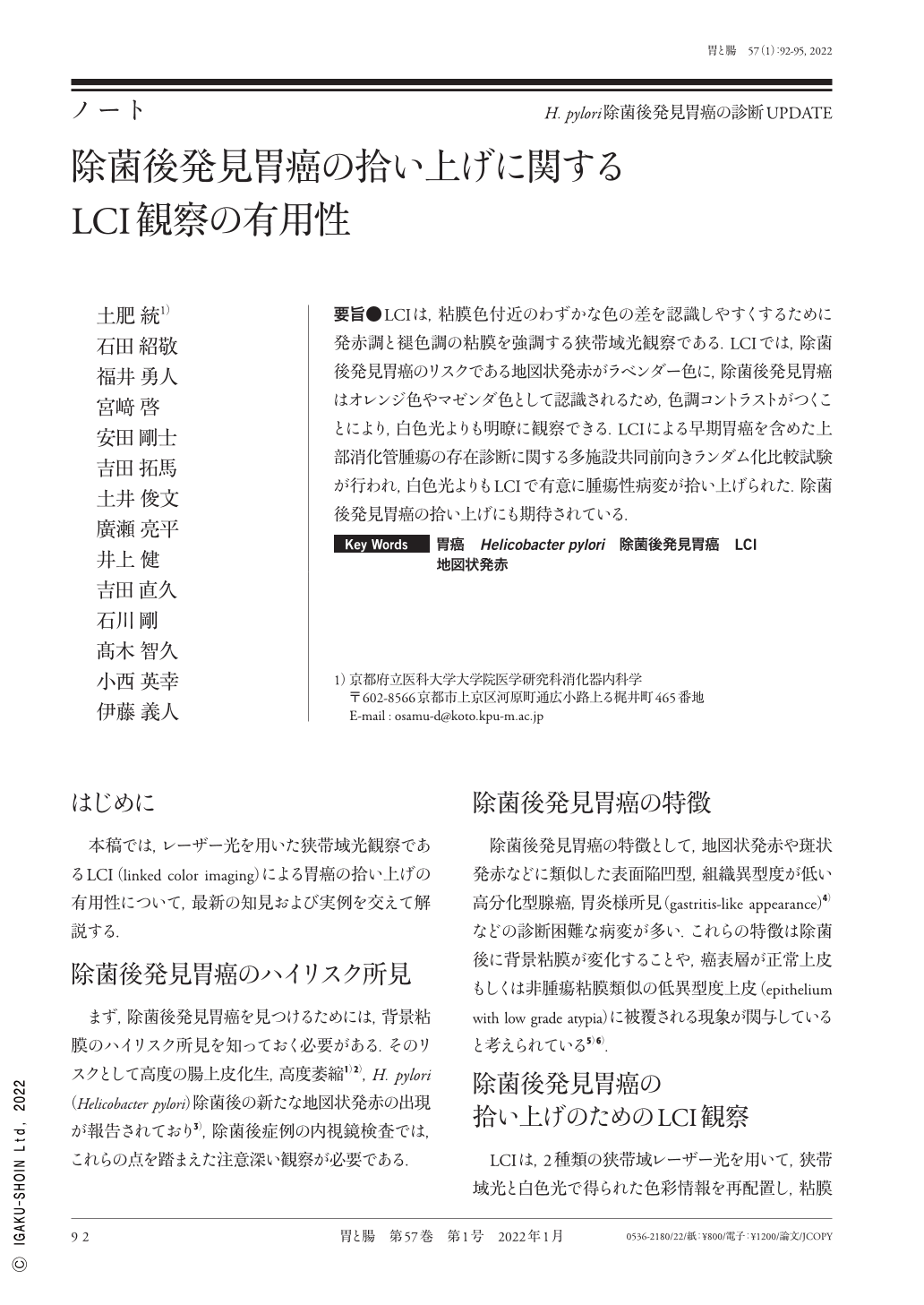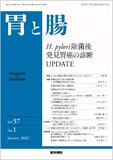Japanese
English
- 有料閲覧
- Abstract 文献概要
- 1ページ目 Look Inside
- 参考文献 Reference
要旨●LCIは,粘膜色付近のわずかな色の差を認識しやすくするために発赤調と褪色調の粘膜を強調する狭帯域光観察である.LCIでは,除菌後発見胃癌のリスクである地図状発赤がラベンダー色に,除菌後発見胃癌はオレンジ色やマゼンダ色として認識されるため,色調コントラストがつくことにより,白色光よりも明瞭に観察できる.LCIによる早期胃癌を含めた上部消化管腫瘍の存在診断に関する多施設共同前向きランダム化比較試験が行われ,白色光よりもLCIで有意に腫瘍性病変が拾い上げられた.除菌後発見胃癌の拾い上げにも期待されている.
LCI(linked color imaging)is a narrow-band optical observation technique that emphasizes reddish and discolored mucosa to facilitate the recognition of slight color differences near the mucosal color. Map-like redness, which is a risk factor for gastric cancer detected after H. pylori(Helicobacter pylori)eradication, can be observed more clearly in LCI than in WLI(white light imaging)due to the color contrast provided by LCI. In LCI, map-like redness is recognized as a lavender color area and gastric cancer is recognized as an orange or magenta color area. In a multicenter, prospective, randomized, controlled trial, more number of upper gastrointestinal tumors, including early gastric tumors, were detected through LCI than through WLI. Therefore, LCI is expected to be useful for detecting gastric cancer after H. pylori eradication.

Copyright © 2022, Igaku-Shoin Ltd. All rights reserved.


